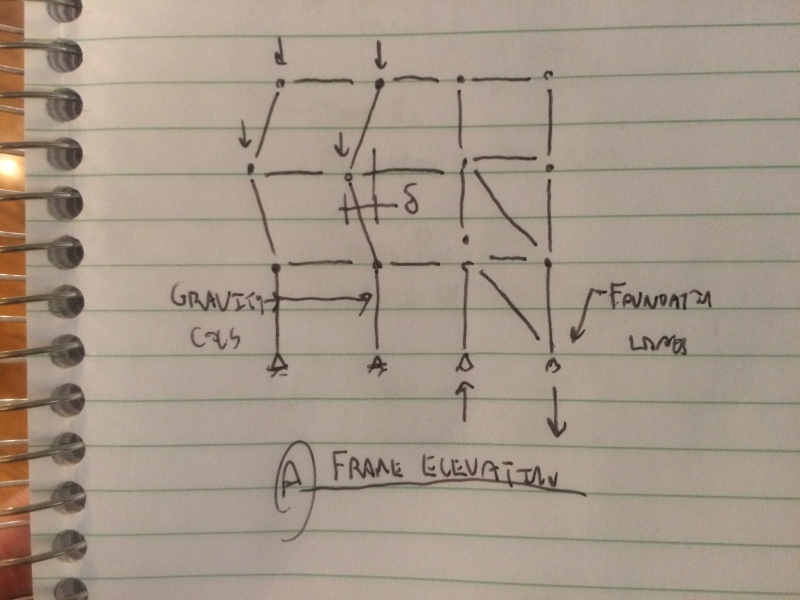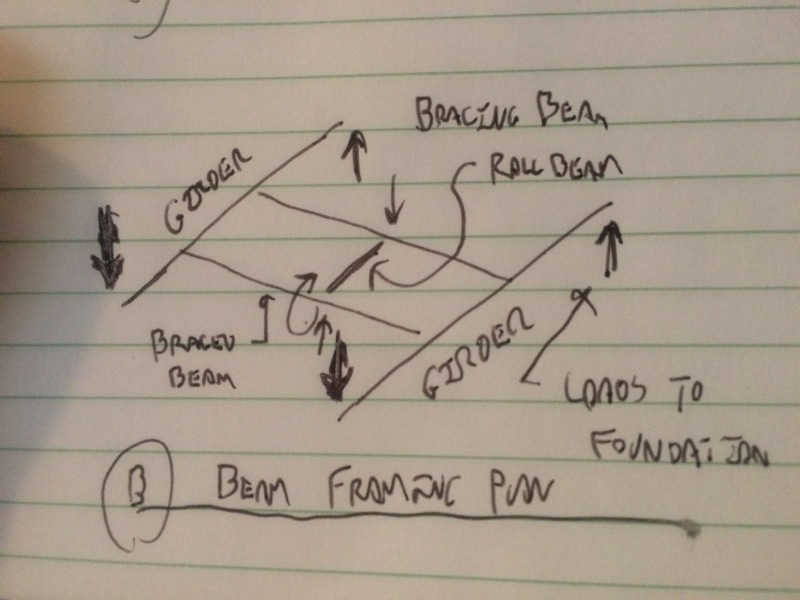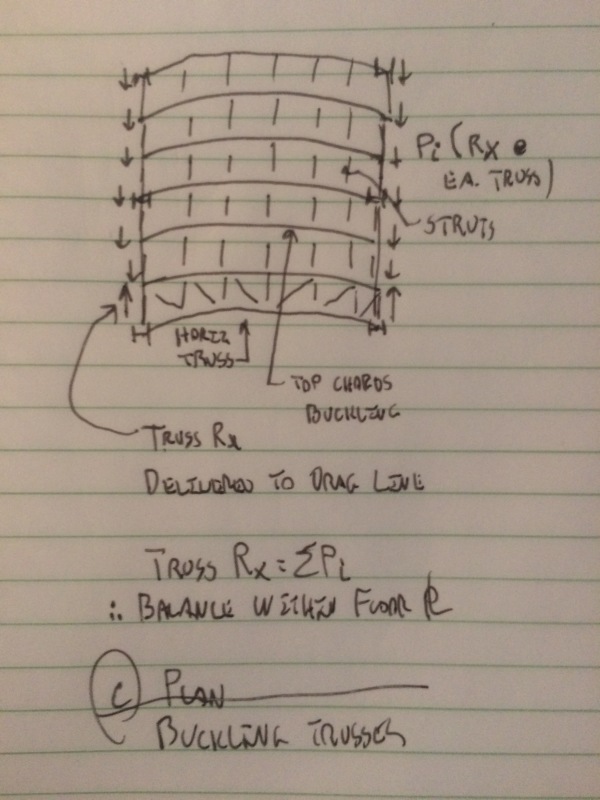Eagleee
Structural
- Feb 14, 2017
- 51
Hi everyone,
I am interested in your opinion on the general way of dealing with stabilizing forces. Imagine a simple industrial steel structure, with roof trusses where the compressed chord(s) is restrained from buckling out of plane by struts (purlins or roof cladding assumed not to do this). These struts usually transfer forces to the roof bracing system.
1. As 2nd order analyses are not usually performed, the compression + out of plane imperfection of the chord is usually taken into account through an equivalent uniform lateral load applied to the chord. Here I introduce my first question: the application of this lateral load is made together with the application of 'reactions' in the eave struts (assuming the truss is laterally supported there), right? So in this situation, the axial force in the eave struts will be opposite of that in the intermediate struts. Is it correct that as long as everything is connected to the bracing system, no load originating from this situation will leave the roof plan?
2. Since the applied 'fictitious' load is a fraction of the max. compression in the chord, how would it enter in load combinations?
3. Have you encountered cases in which a strut which is assumed to restrain the compression member is not connected to the bracing system and would transfer the force to the top of a gable column for instance? If so, I guess the force would indeed make its way down the structure and it will influence the design of other members (I am exaggerating the magnitude of these forces to illustrate my point), would you agree?
I have little experience under my belt, but from what I know, these forces are dealt with in practice just by ensuring that the struts meet the stiffness and / or strength criteria (i.e. the 2% rule) and leaving a small reserve for the bracing system, is that correct?
All in all, if I would have to sum up my questions into one, I guess it would be: "where do you stop with these forces and how do you see their paths?". I could also provide a quick sketch if the situation I am referring too is unclear. Thanks a lot in advance, hope it's not too much text.
I am interested in your opinion on the general way of dealing with stabilizing forces. Imagine a simple industrial steel structure, with roof trusses where the compressed chord(s) is restrained from buckling out of plane by struts (purlins or roof cladding assumed not to do this). These struts usually transfer forces to the roof bracing system.
1. As 2nd order analyses are not usually performed, the compression + out of plane imperfection of the chord is usually taken into account through an equivalent uniform lateral load applied to the chord. Here I introduce my first question: the application of this lateral load is made together with the application of 'reactions' in the eave struts (assuming the truss is laterally supported there), right? So in this situation, the axial force in the eave struts will be opposite of that in the intermediate struts. Is it correct that as long as everything is connected to the bracing system, no load originating from this situation will leave the roof plan?
2. Since the applied 'fictitious' load is a fraction of the max. compression in the chord, how would it enter in load combinations?
3. Have you encountered cases in which a strut which is assumed to restrain the compression member is not connected to the bracing system and would transfer the force to the top of a gable column for instance? If so, I guess the force would indeed make its way down the structure and it will influence the design of other members (I am exaggerating the magnitude of these forces to illustrate my point), would you agree?
I have little experience under my belt, but from what I know, these forces are dealt with in practice just by ensuring that the struts meet the stiffness and / or strength criteria (i.e. the 2% rule) and leaving a small reserve for the bracing system, is that correct?
All in all, if I would have to sum up my questions into one, I guess it would be: "where do you stop with these forces and how do you see their paths?". I could also provide a quick sketch if the situation I am referring too is unclear. Thanks a lot in advance, hope it's not too much text.



